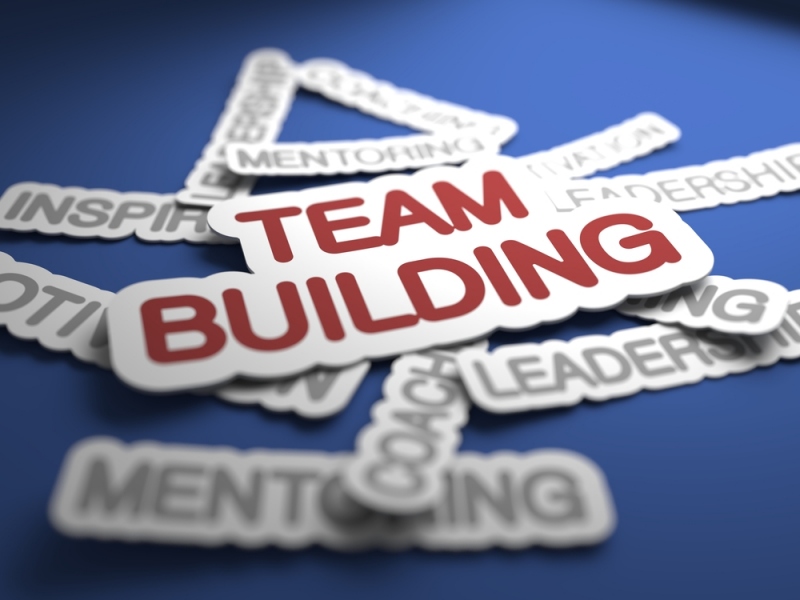Quick team-building activities, while being educational, are also enjoyable – or at least they should be. These activities aid the team in learning about each other in terms of how each person works, how they think, how they problem-solve, and, not least, how they have fun.
Here, we consider three quick team-building activities that endeavour to achieve a variety of team-building goals within the workplace.
Back of Napkin
On the rear of a napkin, sketch the solution to a particular problem, just like many successful entrepreneurs have done in the past.
Teams then need to work together in order to creatively solve problems.
Participants: Six to 24, divided into three to four teams.
Ten to 20 minutes’ duration.
The objective: To promote teamwork and plenty of unconventional thinking.
How to Play
- Generate a number of open-ended problems. The problems can relate to your business, they can apply to a product – an imaginary product is fine, they can have an environmental focus or something else entirely.
- Teams should be divided into two to four players each. Ideally, teams should comprise individuals that have never previously worked together.
- Provide each team with a pen and a folded napkin.
- One by one, teams should be invited to come up with a solution to each problem in turn. This can be in sketch format, in graph format, or as a chart. All solutions are then evaluated and the winner (the team with the best solution) declared.
Strategy
The “back of napkin” team-building activity works on the same principles that have been used for many real-life startups and product ideas previously. It’s a simplistic team-building exercise that provides participants with an enjoyable activity while simultaneously promoting out-of-the-box thinking and teamwork.
Spectrum Mapping
Spectrum Mapping involves the mapping of different perspectives on a particular topic and then organising them in the form of a spectrum.
Doing so can uncover an array of ideas and demonstrate a diversity of opinions within teams. Further, it can encourage team members that rarely contribute to participate.
Participants: Five to 15.
Thirty to 60 minutes’ duration.
The objective: To encourage the expression of different views and to share a diversity of thought.
How to Play
- Begin by identifying a number of topics about which you would like opinions and insights from all participants.
- On a whiteboard, write the topic for discussion in the centre. Invite participants to note their own perspectives on Post-it Notes. Stick each Note down either side of the central topic in the whiteboard.
- Invite the group to group similar ideas together on one side. Outlying concepts should be grouped on the opposite side.
- All ideas should be arranged into a “spectrum,” whereby those ideas that are most popular will be placed to the extreme right, and the less popular ideas to the extreme left.
Strategy
Creating a “spectrum map” such as this provides insights into your team’s diversity of views on a particular topic. By selecting a topic that is highly relevant to your business, this simple, quick team-building exercise can reveal a vast amount of unorthodox and unconventional thinking.
Radio Play
While making short movies can be a fun team-building activity, not all team members may wish to appear on camera.
Nevertheless, there is an alternative that can be more inviting even to the shyest of team members – crafting a radio play.
Creating a radio play provides different teams with the opportunity of working together and expressing individual and group creativity.
Participants: Six minimum.
Up to two hours’ duration, though can be much less.
The objective: To promote teamwork, creativity, time management, and collaboration.
How to Play
- For this team-building activity, you’ll need marker pens, normal pens, notebooks, microphones (can alternatively use mobile phone audio recording software), flip charts, and various props for the sound effects.
- Divide the participants into equal-sized teams of between three and 12 people.
- Establish a theme or invite teams to choose their own theme.
- Allow teams up to 45 minutes to plan and write the play. Fifteen to 20 minutes should easily be enough for each team’s performance.
- Review each play and provide a prize to the winning team based on concept and performance.
Strategy
Inviting teams to create a radio play is a far more attainable format than making a movie. Because there are no cameras involved, more team members will likely wish to participate.
Additionally, the production of a successful play, albeit in audio format, calls for teamwork, for collaboration, and for plenty of creative thinking.
Conclusion
This article caters to only three quick team-building activities though there are many more, with some more examples being available at https://brightvisionevents.co.uk/team-building/.
How you employ these activities depends on the number of participants, the amount of preparation time available, the available setting, and your end goal.
Be sure to combine more serious team-building activities together with less serious games for optimal results. While team building should be effective, it also must be fun. Frequently, the activities that are more fun can have a larger and more beneficial impact than the more serious exercises.
